
- Home
- Photography Tours
- Diary / Blog
- Galleries
- Foreign Trips
- Tasmania 2016
- NE Queensland 2016
- Western Alps 2016
- NE Spain 2016
- Australia's Wet Tropics 2015
- Australia's Top End 2015
- SW Australia 2015
- Switzerland 2015
- Andalucia 2015
- Belize 2015
- Australia 2014
- Switzerland 2014
- Belize 2014
- Bahama Islands 2014
- Switzerland 2013
- Ecuador 2012-2013
- Florida 2011-2012
- Vancouver Island 2011
- Australia 2010
- Peru 2008
- Bulgaria 2007
- Lesvos 2006
- California 2006
- New Zealand 2005
- Extremadura 2005
- Goa, India 2004
- The Gambia 2003
- About
November 2016
Tasmania, Australia
Part 1
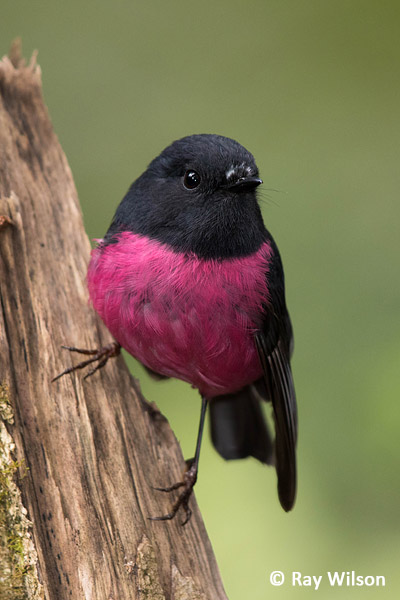
male Pink Robin (Petroica rodinogaster)
From northern Queensland I flew down to Tasmania for the final month of this year's Australian trip. Here, my main goals were to find and photograph all 12 of the Tasmanian endemic birds.
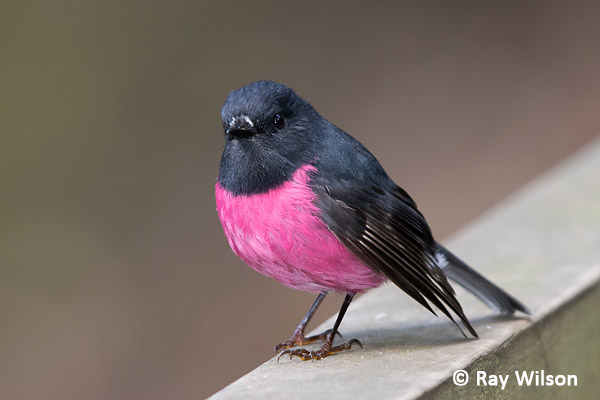
male Pink Robin (Petroica rodinogaster)
My first port of call was the excellent Water Works Reserve, only a couple of kilometres from the city centre, where this gorgeous male Pink Robin was one of the first birds I found! Pink Robins are fairly common on Tasmania and are much easier to find there than on the Australian mainland.
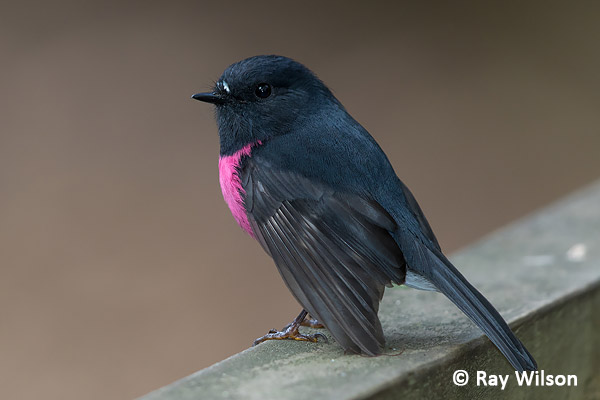
Pink Robin (Petroica rodinogaster)
As with many birds, the females are nowhere near as pretty as the males!
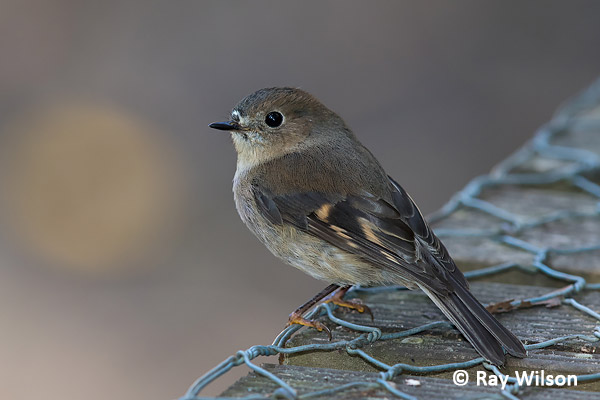
female Pink Robin (Petroica rodinogaster)
After watching the Pink Robins for a couple of hours, I continued on my walk and after only another 50m found my first photographable endemic: Tasmanian Thornbill.
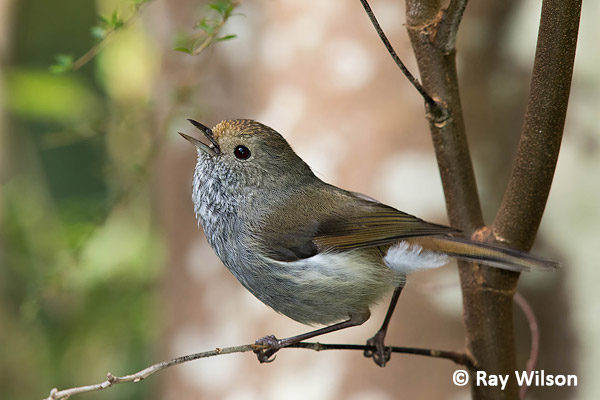
Tasmanian Thornbill (Acanthiza ewingii)
Tasmanian Thornbill is very similar to Brown Thornbill, which is also common in Tasmania, but can reliably be separated by their undertails. Tasmanian Thornbills have pure white undertail coverts while they are buff-coloured in Brown Thornbills.
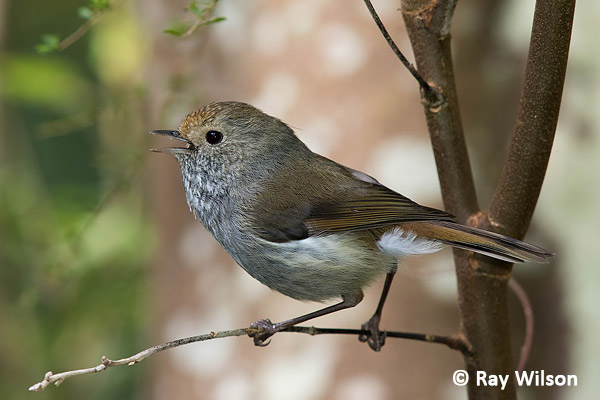
Tasmanian Thornbill (Acanthiza ewingii)
The excellent start to my first day in Tasmania continued with some pretty good views of a Green Rosella, another Tasmanian endemic, eating a sprig of flowers.
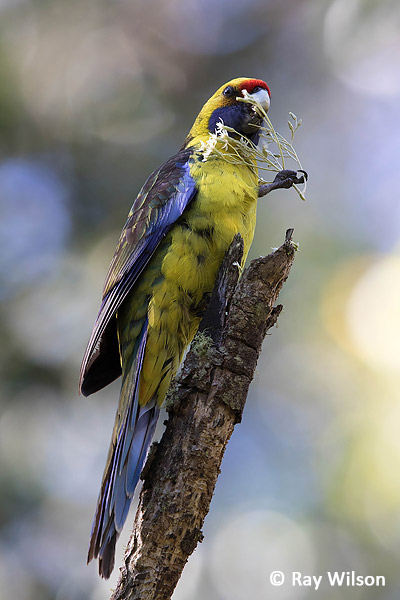
Green Rosella (Platycercus caledonicus)
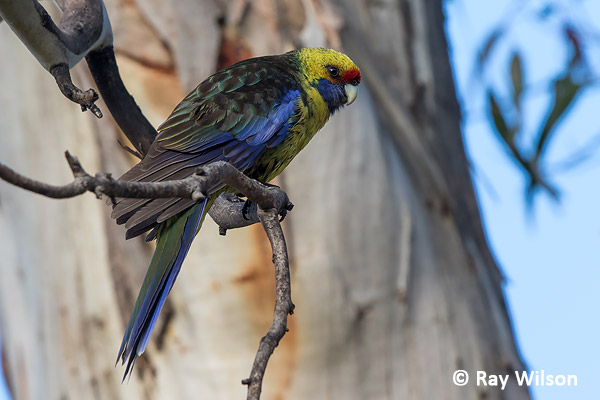
Green Rosella (Platycercus caledonicus)
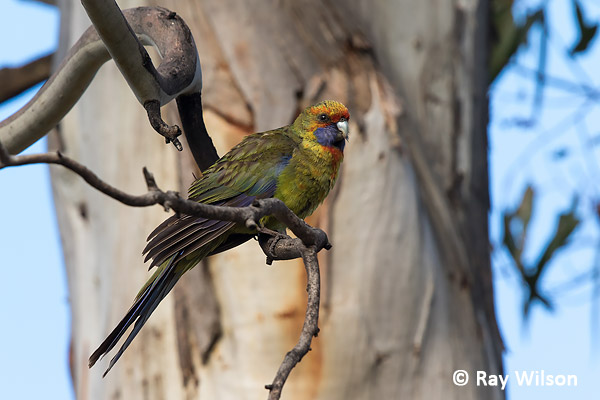
immature Green Rosella (Platycercus caledonicus)
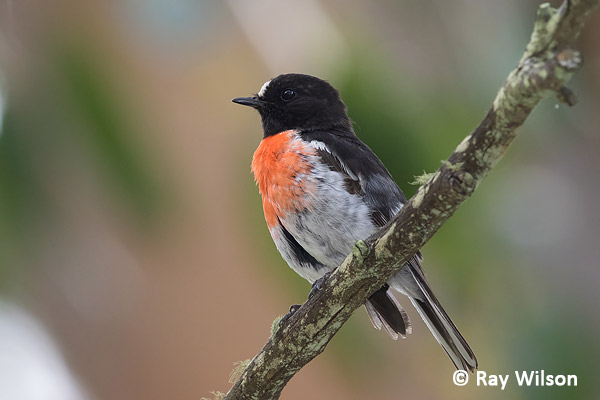
male Scarlet Robin (Petroica boodang)
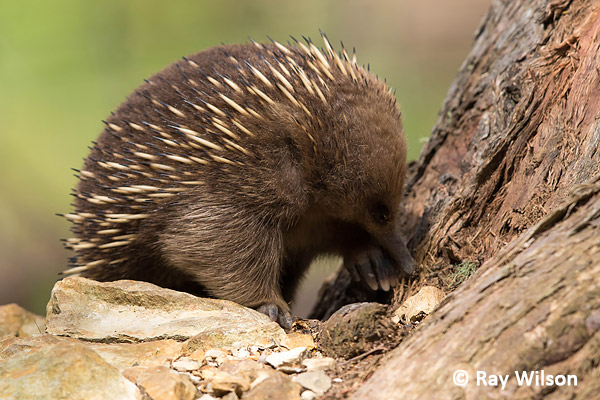
Short-beaked Echidna (Tachyglossus aculeatus setosus)
This Echidna was using its powerful claws to methodically dig up ant nests for about 90 minutes at the base of one of the dams at the Waterworks Reserve.
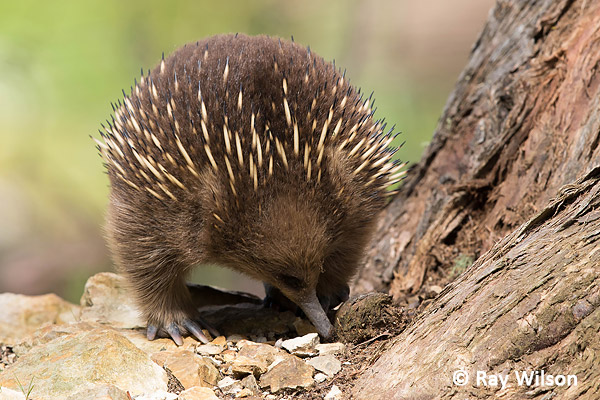
Short-beaked Echidna (Tachyglossus aculeatus setosus)
The fur on Tasmanian Echidnas is a lot longer and thicker than on the mainland, due to the cooler climate, and sometimes completely obscures the spines on its back.
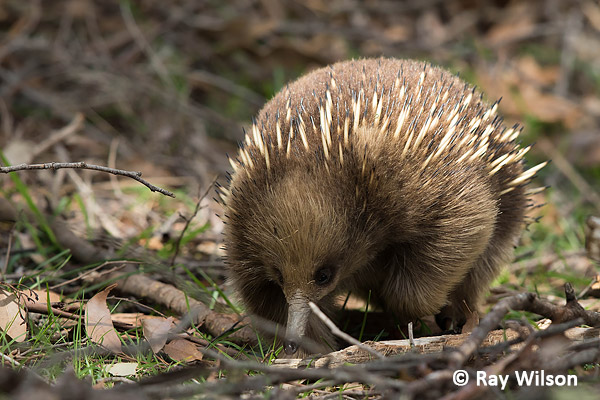
Short-beaked Echidna (Tachyglossus aculeatus setosus)
Dawn the following morning found me halfway up Mount Wellington exploring the many walking trails that traverse the montane forest. On reflection, getting up there for dawn was probably a bit pointless as many of the birds didn't seem to be very active until the temperatures warmed up a bit later in the morning. I could see their point too! After getting acclimatised to the 30°C heat and humidity of northern Queensland for the previous 2 months, being exposed to a damp 3°C on Mount Wellington was a bit of a shock to the system and I still felt cold even when wearing 5 layers of clothing!
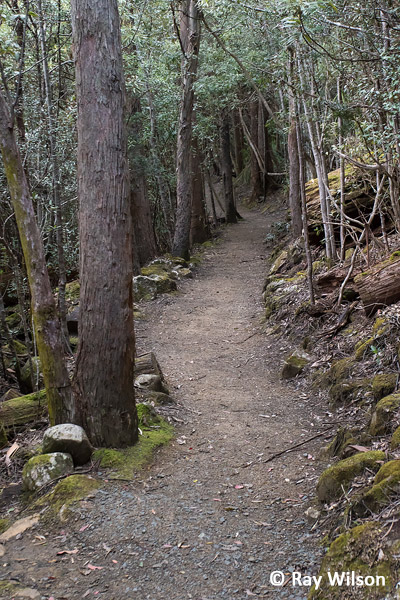
A track through Montane woodland on Mount Wellington |
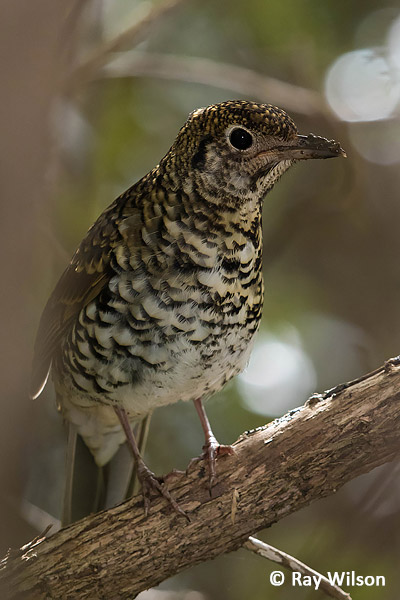
Bassian Thrush (Zoothera lunulata) |
The undergrowth in the montane forests is pretty dense in places and getting clear views of the birds can be frustratingly difficult. Bassian Thrushes were reasonably common among the leaf litter, but fairly shy.
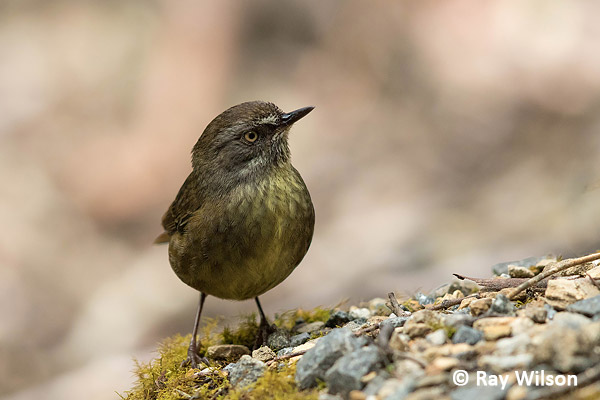
Tasmanian Scrubwren (Sericornis humilis)
The most commonly encountered species was the endemic Tasmanian Scrubwren, and small foraging parties of these frequently passed through. They mostly kept to the dense undergrowth but occasionally briefly perched in the open at the edge of the path. I had to be quick though to get a photo as they rarely stayed still for more than a second.
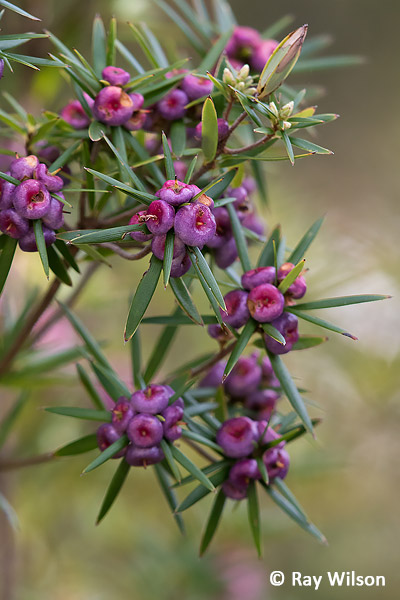
Purple Cheeseberry (Cyathodes glauca)
The bright purple berries of the very common Purple Cheeseberry bushes brought a bit of colour to some parts of the forest.
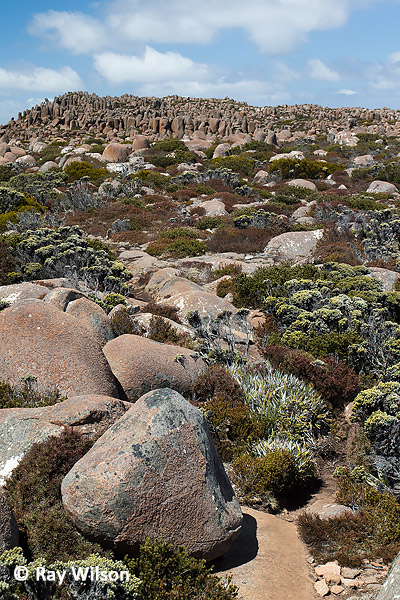
|
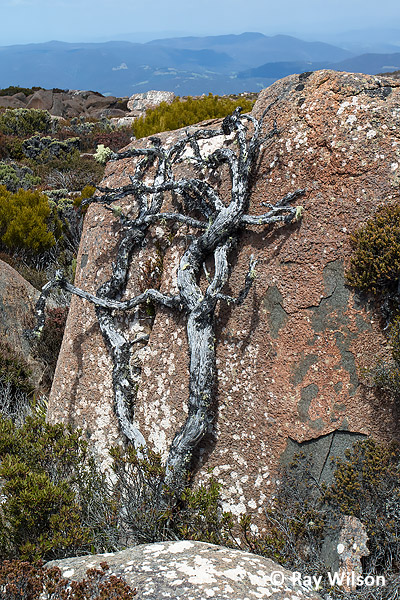
|
The summit of the mountain (1271m; 4170ft) is a windswept environment of short scrubby heath and if it is inhabited by any birds, they were all keeping their heads down in the icy-cold 40kph winds. Apart from a couple of immature Peregrines that scared the life out of me as they missed my head by inches whilst chasing each other over the plateau, I didn't see a single other bird the entire two hours I was on the summit.
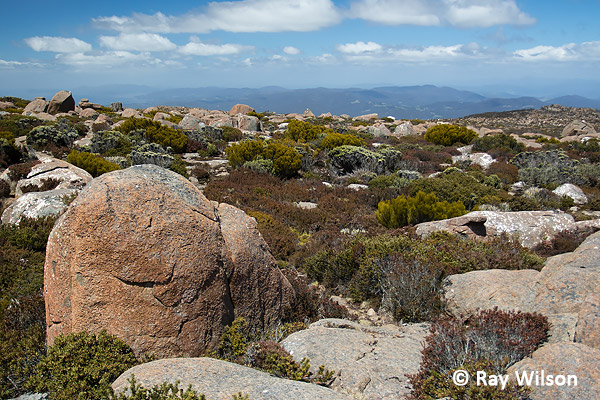
Alpine heath on the summit of Mount Wellington

View towards North West Bay from the summit of Mount Wellington
Ray Wilson owns the copyright of all images on this site.
They may not be used or copied in any form without prior written permission.
raywilsonphotography@googlemail.com